Reports
Product Export
Any time you are free to export the complete data of your products for you to analyze it in analytics tools, crunch it on Excel, or load it in an application, database, etc. The structure of the export can be strange at first but at the end you will understand the scale it has and the potential you got when the data is ordered this way.
First of all you can export the complete or partial dataset. To filter just a part of the dataset, select filter lists and follow the logic of sets like explained here in: commands/filters
To make an export, on the screen where you see a list of the products, on the upper side, near the search bar you should find a button called "export products". It will open a modal window where you can narrow the scope of the export. If you keep it blank, by default will export the complete dataset. When finishing to build the export file, a button to download will be presented, there you can download the file.
The file is in CSV Format.
The Core Structure
The first step is to understand the main structure where each row represents a Click2Sync Product, and each column represents a field of the product. The field columns repeat once per connection, so if you have 4 connections setup on your account, a total number of columns you will have for this data will be = (number of fields x 4).
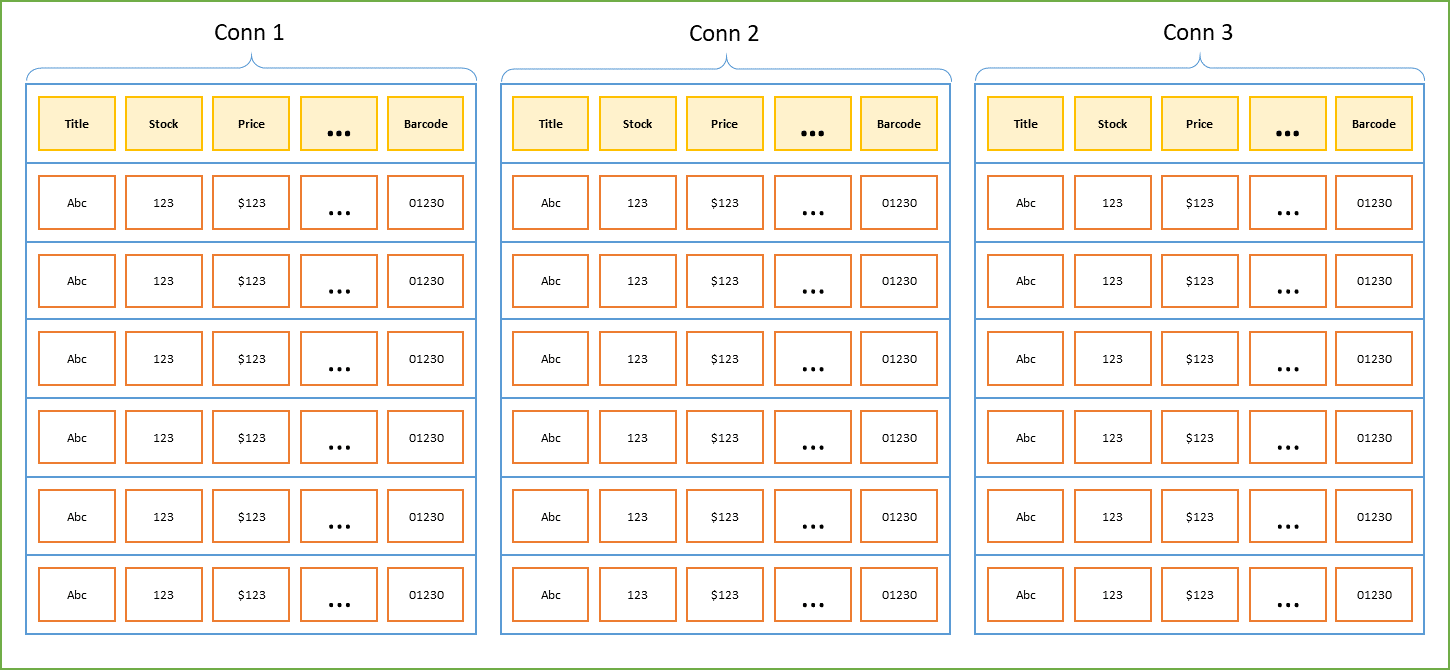
Look how for each connection, the fields are put up one next to the other horizontally and vertically the number of products.
Also if you have the N connections filled this means all products have equivalences on all connections. Sometimes you don't have all products on all connections. In these cases, fields are left blank when no equivalence of that connection is found.
The Metadata Columns
So the CSV not only has the main core structure but helper columns on the left that can help you filter, and understand the level of the detail that a row represents.
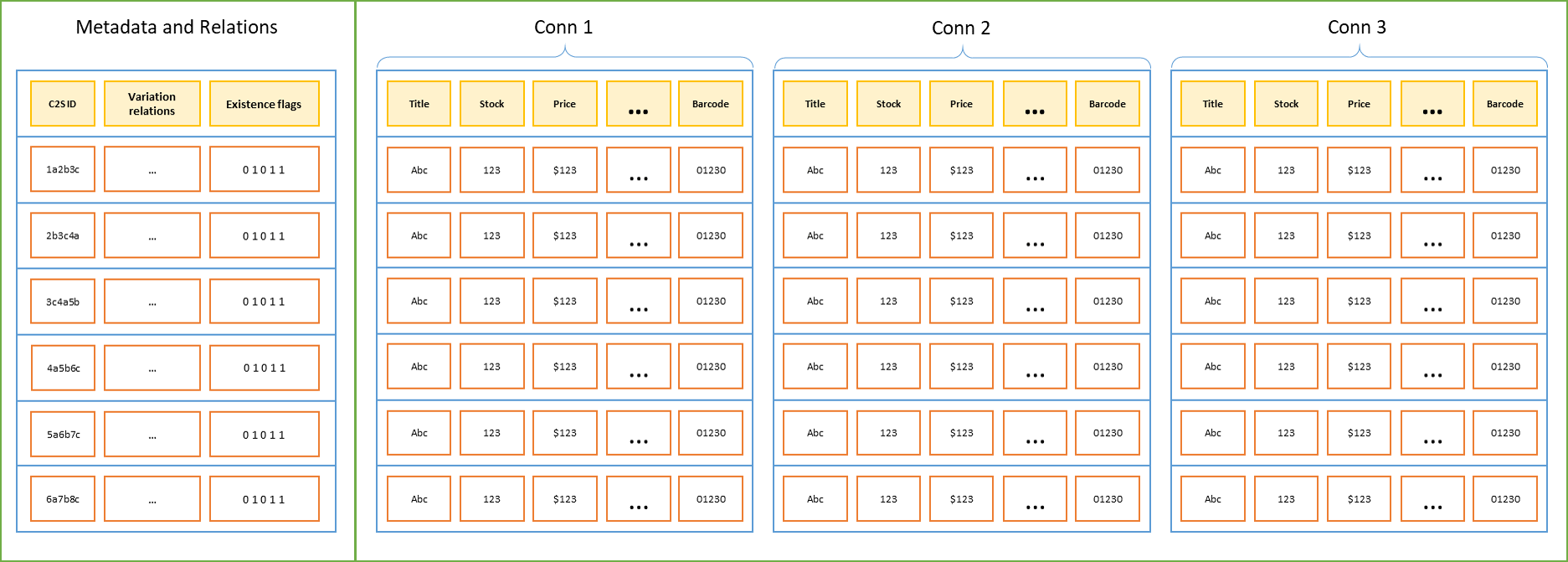
There are 3 main types of columns you will find here:
- The first one is the C2S ID, this ID is the unique ID that represents a product of Click2Syc, normally you could access this product graphically in the C2S Panel by going to https://app.click2sync.com/listing/{C2SID}.
- Next to the id are columns that represent features of the row regarding their hierarchy or deepness of relevance relative to the product.
- Finally boolean flags of existence of an equivalence on that specific connection.
First things first, let's analyze how normal products, depending on their existence of equivalences on different platforms/connections they show up as 1 or 0 on the metadata fields of existence (On conn 1, On Conn 2, etc). And how as mentioned before, those products when don't exist in a connection a blankn space is filled up.
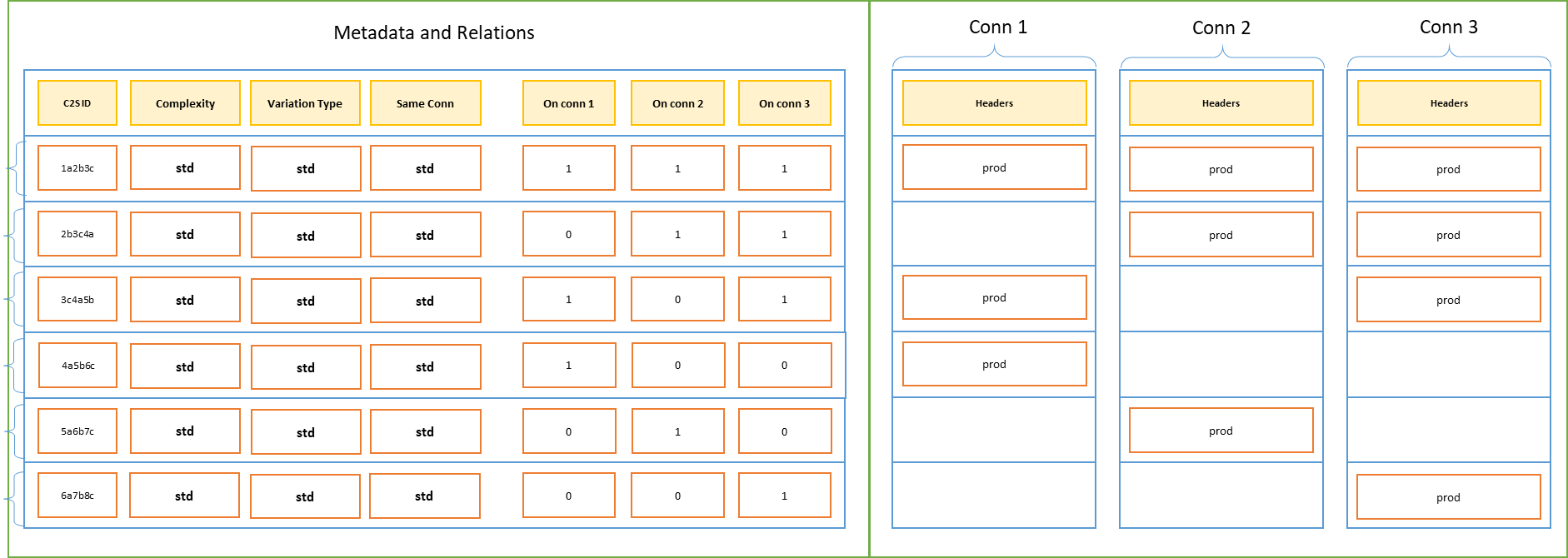
Variations, and same connection item groups
Now let's analyze the other 3 metadata fields, and their possible values:
- Complexity:
- std
- var
- var+std
- [blank]
- Variation Type
- parent
- child
- std
- [blank]
- Same Conn
- std
- multi
- [blank]
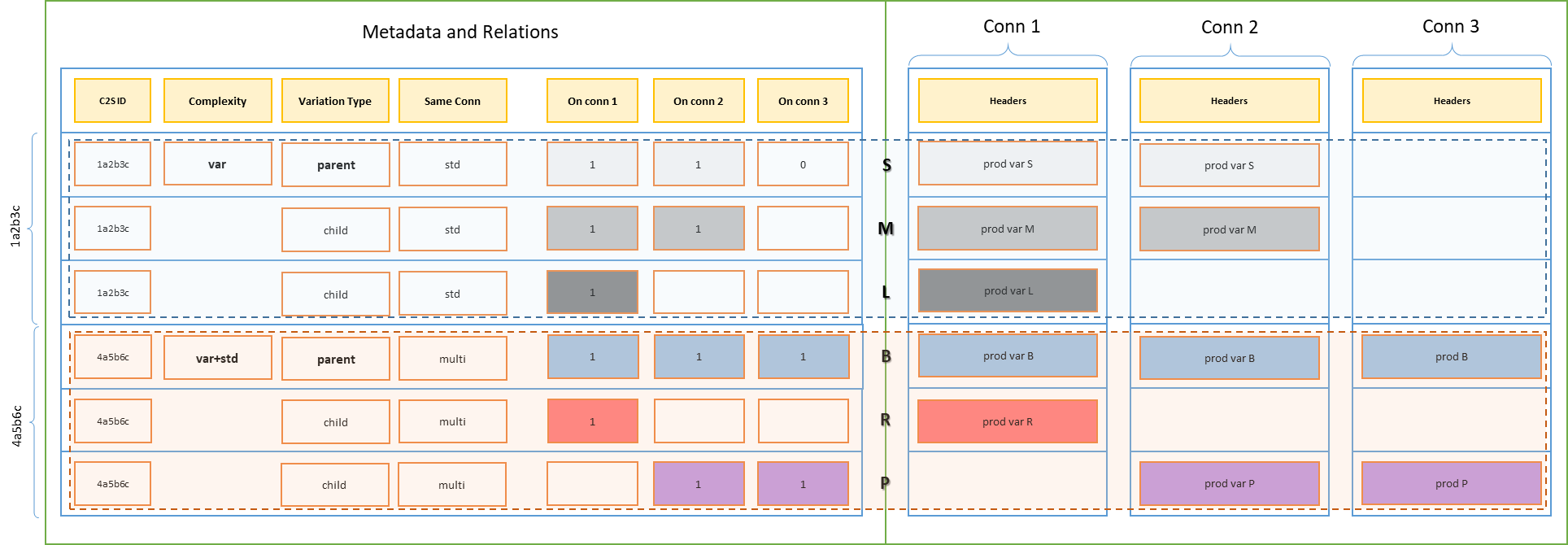
See how in this example
- Even if we have 6 rows, we really mean 2 products on click2sync.
- The first product has just equivalences with variations thus the Variation Type "var"
- It represents an hypothetical product with variations L (large), M (medium), S (small)
- The first row of the first product, when variant, is always the parent
- As there are no multiple products of the same connection grouped on this product, thus the value of "same conn" "std"
- See how on first connection there are equivalences for the three sizes, but on connection 2 there may be just a partial match of the variations and not necessarily match all of them.
And for the second product check that:
- It represents a hypothetical product with variations B (Blue), R (Red), and P (Purple)
- As on conn 3 there are two equivalences that are "separated (not variants)" but that map for their color and size attributes with some variants of other equivalences that do have variations and not separate equivalences, the "Complexity" field marks "var+std" because is a mix of equivalences with variations and independent equivalences.
- Also because of the multiple equivalences of same connection grouped in the same product, the column "same conn" marks "multi"
The Sync State Metadata Columns
At the end of the CSV (the last columns on the right), there are lots of columns basically one for each field for each connection (same as values of fields), but they represent the "Sync State" of those values.
In Click2Sync there are 4 possibles states for the data, you can read more about this here: Colors.
- A (green): something pending to be created
- H (head): something in sync
- M (yellow): somethingi pending to be updated
- D (red): something pending to be deleted
This way you can filter products with pending updates on some fields, or things like that.
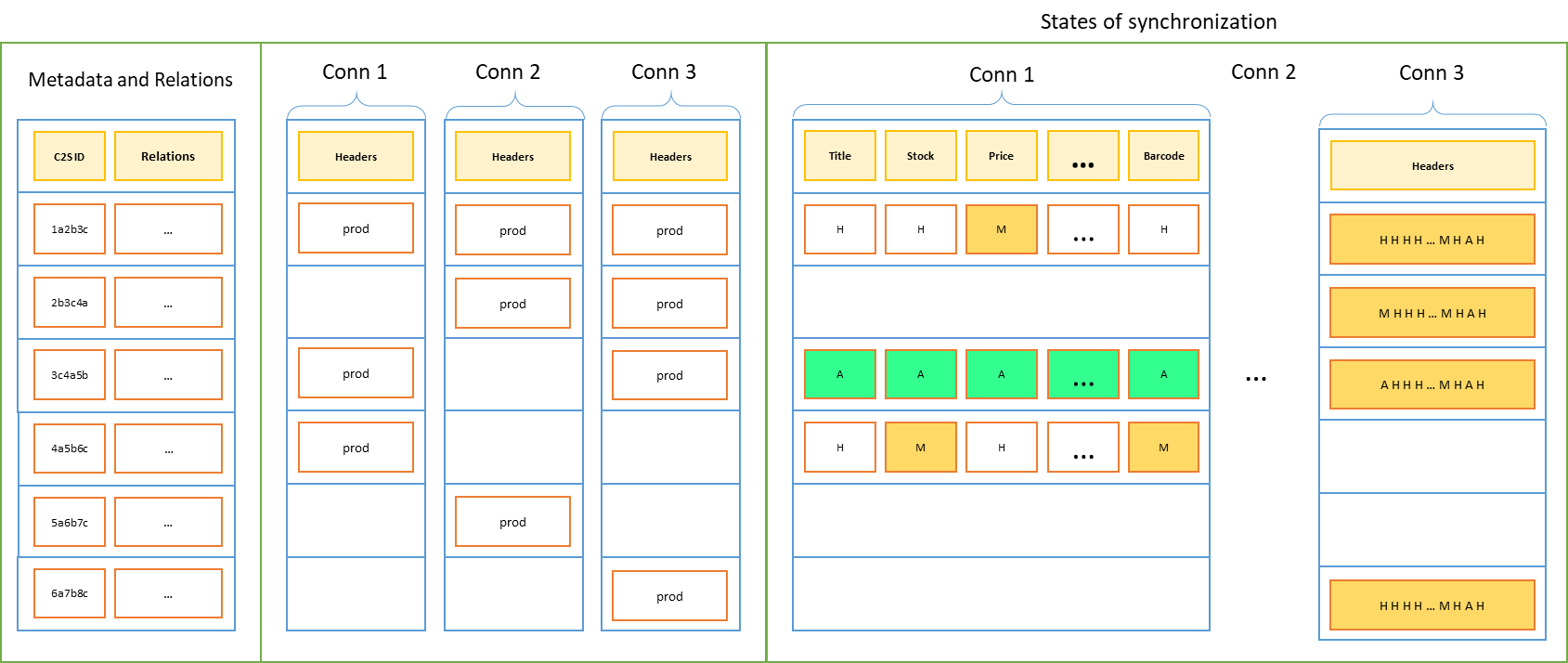
Sales Report
Any time you are free to export the complete data of your sales for you to analyze it in analytics tools, crunch it on Excel, or load it in an application, database, etc. The structure of the export can be strange at first but at the end you will understand the scale it has and the potential you got when the data is ordered this way.
First of all you can export the complete or partial dataset. To filter just a part of the dataset, select filter lists and follow the logic of sets like explained here in: commands/filters
To make an export, on the screen where you see a list of the sales orders, on the upper side, near the search bar you should find a button called "export orders". It will open a modal window where you can narrow the scope of the export. If you keep it blank, by default will export the complete dataset. When finishing to build the export file, a button to download will be presented, there you can download the file.
The file is in CSV Format.
The Core Structure
The first step is to understand the main structure where each row represents a Click2Sync Sales Order, and each column represents a field of the order. The field columns repeat once per connection, so if you have 4 connections setup on your account, a total number of columns you will have for this data will be = (number of fields x 4).
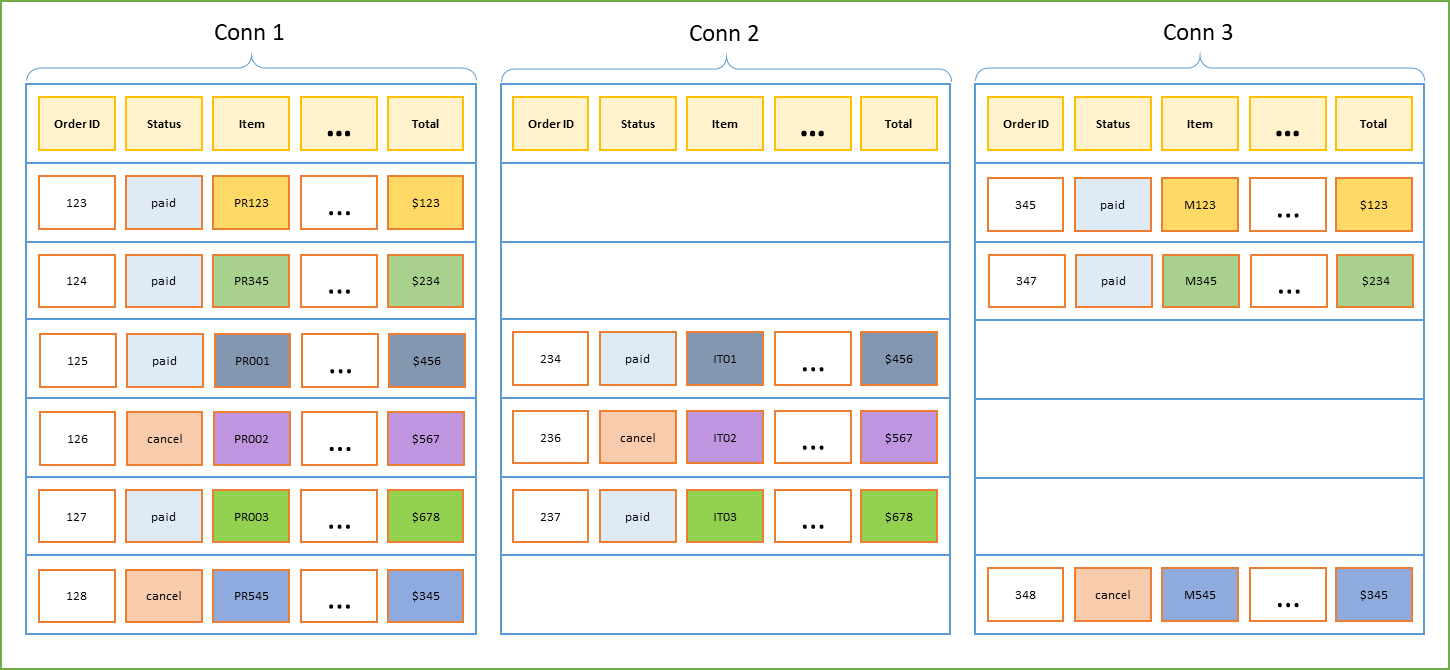
Look how for each connection, the fields are put up one next to the other horizontally and vertically the number of orders.
Also if you have the N connections filled this means all orders have equivalences on all connections. Sometimes you don't have all orders on all connections. In these cases, fields are left blank when no equivalence of that connection is found.
The Metadata Columns
So the CSV not only has the main core structure but helper columns on the left that can help you filter, and understand the level of the detail that a row represents.
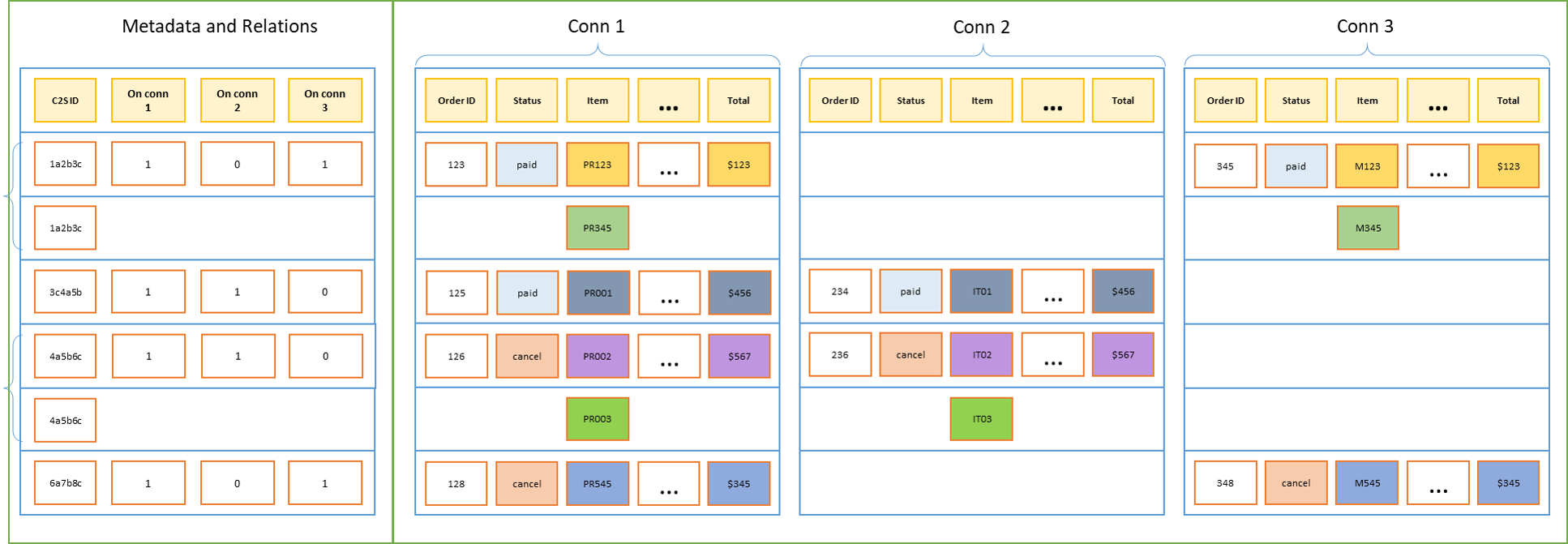
There are 2 main types of columns you will find here:
- The first one is the C2S ID, this ID is the unique ID that represents an order of Click2Syc, normally you could access this order graphically in the C2S Panel by going to https://app.click2sync.com/order/{C2SID}.
- Finally boolean flags of existence of an equivalence on that specific connection.
You will see here how normal orders, depending on their existence of equivalences on different platforms/connections they show up as 1 or 0 on the metadata fields of existence (On conn 1, On Conn 2, etc). And how as mentioned before, those orders when don't exist in a connection a blank space is filled up.
The Sync State Metadata Columns
At the end of the CSV (the last columns on the right), there are lots of columns basically one for each field for each connection (same as values of fields), but they represent the "Sync State" of those values.
In Click2Sync there are 4 possibles states for the data, you can read more about this here: Colors.
- A (green): something pending to be created
- H (head): something in sync
- M (yellow): something pending to be updated
- D (red): something pending to be deleted
This way you can filter orders with pending updates on some fields, or things like that.
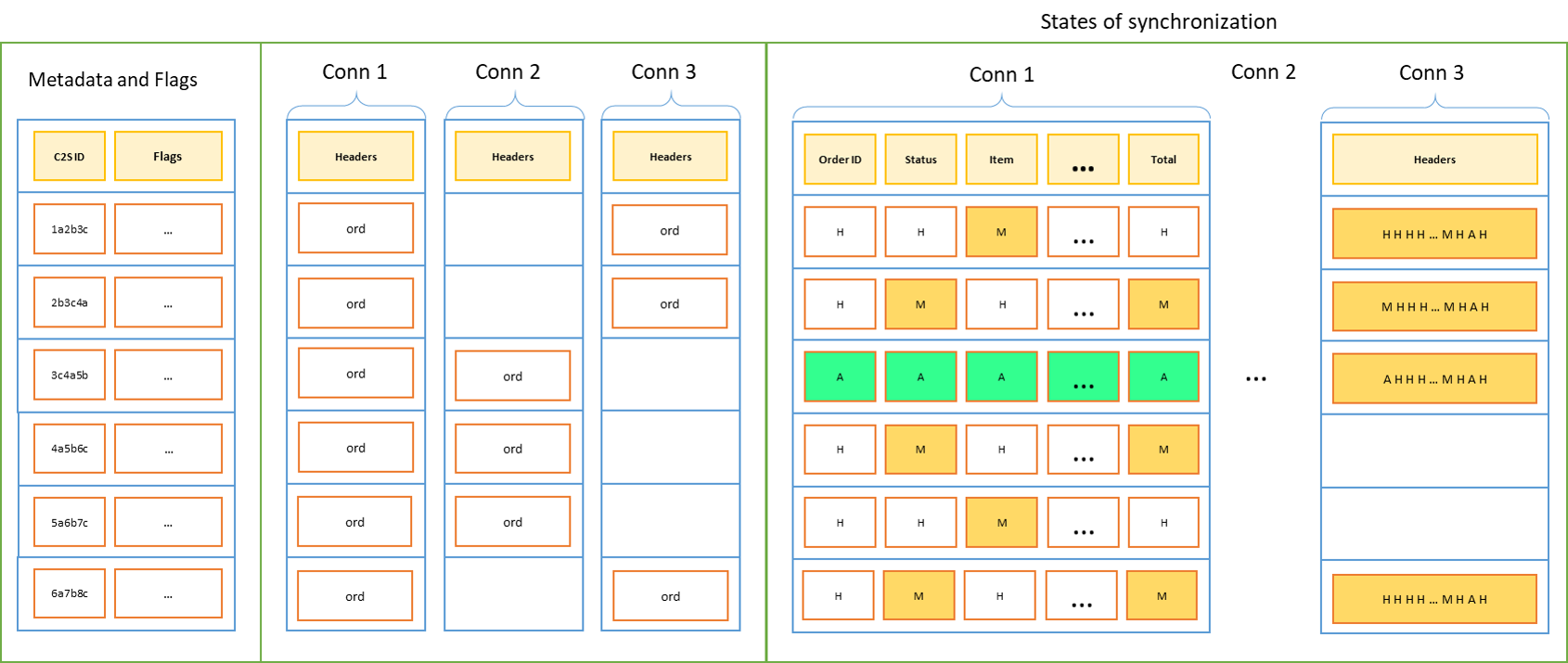
← Fields